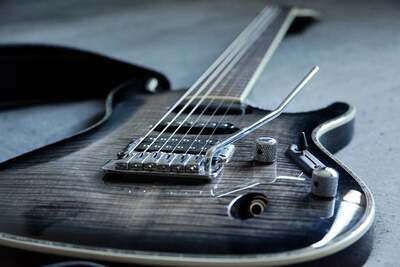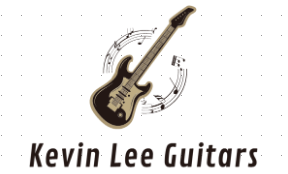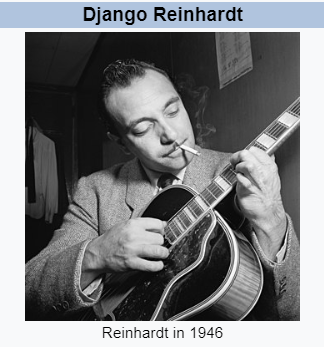Django Reinhardt is celebrated as one of the greatest guitarists of all time, renowned for his pioneering contributions to the genre of Gypsy jazz. His journey to mastering the guitar is a tale of extraordinary talent, determination, and innovation, especially given the significant obstacles he faced. Here’s a closer look at how Django Reinhardt learned to play guitar.

Early Life and Introduction to Music
Django Reinhardt was born on January 23, 1910, in Liberchies, Belgium, into a Romani family. His full name was Jean Reinhardt, but he was nicknamed “Django,” which means “I awake” in Romani. Growing up in a caravan, Django was immersed in a rich musical environment from a young age. His family was musically inclined, and he was exposed to traditional Romani music, which heavily influenced his later style.
Initial Steps with the Banjo and Violin
Before he became a guitarist, Django played the violin and the banjo. At the age of 12, he received his first banjo-guitar, a hybrid instrument, and quickly showed a remarkable aptitude for stringed instruments. Largely self-taught, Django learned by observing and mimicking the musicians around him, developing his skills through practice and experimentation. He played in various bands and quickly gained a reputation for his extraordinary musical talent.
The Life-Changing Accident
In 1928, at the age of 18, Django’s life took a dramatic turn. A fire broke out in his caravan, severely burning his left hand. The accident left him with only partial use of his third and fourth fingers. Doctors suggested that he might never play the guitar again, but Django was determined to overcome this adversity.
Relearning the Guitar
Faced with a significant disability, Django had to relearn how to play the guitar. He developed a unique technique, using only his index and middle fingers for fretting, while his injured fingers supported the guitar neck. This adaptation led to his distinctive style, characterized by rapid arpeggios and innovative chord voicings. Django’s perseverance and creativity allowed him to turn his limitation into a hallmark of his playing.
Musical Influences
Django Reinhardt drew inspiration from a variety of sources. He was particularly influenced by jazz musicians such as Louis Armstrong and Duke Ellington. His exposure to American jazz records in the 1930s played a crucial role in shaping his musical direction. Django combined these jazz influences with his Romani musical heritage, creating a new genre that came to be known as Gypsy jazz or “jazz manouche.”
Formation of the Quintette du Hot Club de France
In 1934, Django Reinhardt formed the Quintette du Hot Club de France with violinist Stéphane Grappelli. This group became one of the most celebrated jazz ensembles in Europe. Django’s virtuosity on the guitar, combined with Grappelli’s violin, created a distinctive sound that captivated audiences. The quintet’s recordings from the 1930s and 1940s are considered some of the finest examples of Gypsy jazz.
Legacy and Continued Influence
Django Reinhardt’s legacy extends far beyond his lifetime. His innovative techniques and unique style have influenced countless guitarists across genres. Despite his early death in 1953, at the age of 43, his music continues to inspire and his recordings remain essential listening for jazz enthusiasts.
Conclusion
Django Reinhardt’s journey to mastering the guitar is a testament to his extraordinary talent and indomitable spirit. Despite facing severe physical limitations, he redefined what was possible on the guitar and created a lasting legacy. His ability to transform personal adversity into artistic triumph makes his story one of the most inspiring in the history of music.






